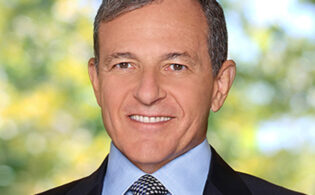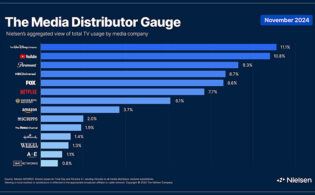Kevin Mayer, the chairman of direct-to-consumer and international at The Walt Disney Company, touted the importance of Asia as a growth driver and discussed the strategy behind Disney+ at APOS today.
Mayer was interviewed on stage at APOS by Vivek Couto, executive director of Media Partners Asia (MPA), the organizer of APOS.
“We’re focused on Asia as one of the growth drivers—it’s super important to us,” Mayer said. Growth in Asia, in India in particular, was one of the drivers behind Disney’s acquisition of 21st Century Fox, Mayer noted. “Star India is a crown jewel of that acquisition.”
He went on to note that “local content is the winner in these markets. We have great global content, but if we’re going to be a big player in areas [in Asia] outside of India, local content is crucial to growing not only our direct-to-consumer business but also our traditional business. We view India as a guidepost.”
Of note, Hotstar, Star India’s OTT platform, has 300 million monthly active users. “One out of every four hours of television in India is delivered by a Star television network. That’s a model we’d love to see elsewhere in Asia—local traditional television and moving it over the top.”
The conversation then moved to the decision to bet big on direct to consumer. “Going all in on a new business model and disrupting your current business is not taken lightly. We discussed it for quite some time. We’ve been looking at the benefits of direct to consumer for several years. The only way to really get data on people’s affinities and usage patterns and viewing patterns is to have a direct relationship with them. We can use that data to personalize the experience and serve the consumer better. Also, it’s a big financial growth strategy. There was a whole part of the value chain that we were leaving to third parties.”
To prep for the D2C launch, Mayer said, “We set up the new Disney in a very specific way. Theme parks and consumer products in one division, the creative elements—the movie studios, television studio, ESPN—to create a content engine, and then we have direct to consumer and international, where we monetize the content. We wanted our investors to understand the economics of it. Direct to consumer will pay a license fee for the content we create. Investors will be able to value the traditional Disney business, which we made whole because of the [licensing] payments we’re making, and then the new direct-to-consumer business.”
Disney expects its D2C business—which is being priced at $6.99 a month in the U.S.—to break even in five years time.
“We’re not after beating Netflix,” Mayer said. “We’ll offer entirely different content on Disney+.”
Disney expects to reach 60 million to 90 million subscribers in five years time, about two-thirds of which will be international. “We’re going to deploy Disney+ in one form or another in each market that matters.”
Mayer went on to discuss the differentiation between Disney+ and Hulu, where Disney is now the majority owner.
“If you’re a fan of Disney, Pixar, Marvel, Star Wars or National Geographic, everything that flows through those brands will be on Disney+. Some will travel through other windows, but everything eventually will be on Disney+. It’s a four-quadrant service. You won’t find anything above a PG-13. Hulu is our general-entertainment service, so everything from ABC, FX, the 21st Century Fox television studio, Freeform, Fox Movies, will end up there. And we’ll continue to license from third parties. And in the U.S., we have ESPN+. So three independent services.”
Disney may explore international opportunities for Hulu, Mayer added.
On other potential acquisitions at Disney, Mayer stated, “Acquisitions are never done—we’re always looking to grow our business. We are somewhat extended now, so I don’t think there are any major acquisitions in the cards, but you never know. Never say never.”
The session ended with Mayer discussing the “balancing act” between Disney+’s international rollout and the company’s traditional television business around the world. “One of the reasons we put direct to consumer and international in the same organization was so we could make the decision as to where that balancing act should lie. I think you’ll see a shift over time. The direct-to-consumer business has to be robust, we’re going all in, but we’re trying to have a substantial and growing traditional television business for the foreseeable future as well.”





